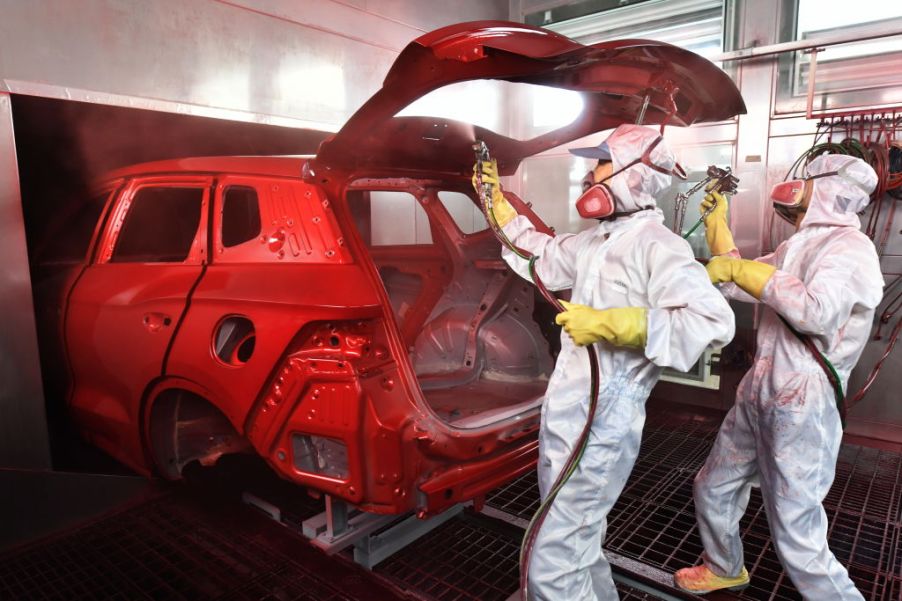
Painting Cars Is Over: Heated Film Is The New Auto Finish
Painting cars have a lot of drawbacks-where do we begin? From an environmental, hazard, time, cost, and durability standpoint it’s bad. Yes, car paint is better than it was, but it is still time-consuming, prone to blemishes and damage, and in spite of water-borne paint a chemical clear coat needs to be applied. But a company in Osaka, Japan, has developed a process to heat film and apply it to car bodies. Soon painting cars will be over, and the heated film will be the news auto finish.
Fu-se Vacuum Forming in Osaka has developed a device to press the heated film onto car bodies. While many interior parts in cars and trucks already use the process, the problem has been applying the film to large car body surfaces.
Heated film is applied in a one-step process that slashes electricity use by almost 80%

The film is applied in a one-step process that slashes electricity use by almost 80%. Remember, painting cars means priming, and then applying a base coat, plus using a chemical clear coat. So there are at least three different passes with drying time needed for each pass. Plus the environmental impacts are drastically reduced if not eliminated with this process.
3M and also Kyowa Leather Cloth in Japan already use the heated film process, but only for smaller parts. Fu-se spent over $1 million to develop their prototype using what it calls its three-dimension overlay method, or TOM. The process involves heating the film and then applying it to the body surface in a vacuum.
By creating a layer of vacuum between the body and film once the air is introduced it pushes the film against the body surface. With the thin layer of adhesive on the film, once it cools it bonds tightly to the body. Air pressure is adjusted based on the size of the panels to be covered.
Fu-se will soon begin marketing the heated film finish to auto manufacturers

Fu-se will soon begin marketing to auto manufacturers to build custom units. It believes that in electricity savings alone it will pay for itself fairly quickly. Painting a car consumes a lot of electricity. It is estimated that between 30% to 40% of the total amount of power needed to build a car is consumed in the painting process.
For years Fu-se has shared its technology with Toyota. Many of the interior components used inside of a Toyota are coated using this process. For the last three years, the company has been developing techniques to be able to apply it to large surfaces for auto body coating companies.
Heated film can also do things that paint can’t

If the film is applied by hand it adds two to three times the amount of cost as doing a normal paint job. Entered into mass production and manufacturing larger amounts of the film will both drive costs down. But the film can also do things that paint can’t.
It will conform to dimples or patterns pressed into the surface. Patterns like those on a golf ball can reduce air resistance. It can also give the feel of wood or cloth. And if plastic body panels become more prevalent the film is easier to apply to those surfaces than paint.



